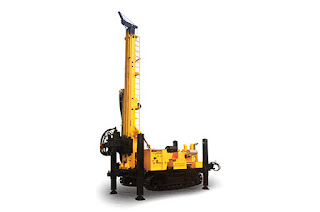What are the different types of water drilling rigs?
Water drilling rigs are machines that are used to drill into the ground and access water reserves for various purposes. There are different types of water drilling rigs available, each with its unique features and capabilities. In this article, we will explore the various types of water drilling rigs and their applications.
Cable tool drilling rigs: Cable tool drilling rigs are one of the oldest types of water drilling rigs and are still in use today. These rigs work by repeatedly lifting and dropping a heavy chisel-shaped tool, also known as a bit, to break the ground and create a borehole. Cable tool drilling rigs are suitable for drilling shallow wells in soft and medium-hard soils, such as clay and sand.
Auger drilling rigs: Auger drilling rigs use a helical drill bit to create a borehole in the ground. The drill bit is attached to a rotating drill stem, which is turned by the drilling rig's power source. Auger drilling rigs are suitable for drilling shallow wells in unconsolidated soils, such as sand and gravel. They are also used in geotechnical and environmental drilling.
Rotary drilling rigs: Rotary drilling rigs are the most common type of water drilling rig used today. They work by rotating a drill bit to create a borehole in the ground. The drill bit is attached to a drill pipe, which is turned by the drilling rig's power source. Rotary drilling rigs are suitable for drilling both shallow and deep wells in various soil types, including hard and compact soils, such as rock.
DTH drilling rigs: Down-the-hole (DTH) drilling rigs are designed for drilling deep wells in hard and compact soils, such as rock. DTH drilling rigs use a pneumatic hammer to crush and break the rock, while the drill bit rotates to create a borehole. DTH drilling rigs are commonly used in mining, geothermal, and oil and gas exploration.
Direct push drilling rigs: Direct push drilling rigs are designed for environmental drilling, geotechnical investigations, and groundwater monitoring. These rigs use a hydraulic ram to push a hollow drill stem into the ground, without rotation. The drilling process creates a borehole and allows for soil sampling and testing.
Sonic drilling rigs: Sonic drilling rigs use high-frequency vibrations to create a borehole in the ground. The sonic vibrations loosen the soil and rock, allowing the drill bit to penetrate the ground easily. Sonic drilling rigs are suitable for drilling both shallow and deep wells in various soil types, including hard and compact soils, such as rock.
In conclusion, choosing the right water drilling rig for your project depends on several factors, including the depth and type of soil, the required flow rate and quality of water, and the drilling location. Therefore, it's important to consult with a professional drilling contractor to determine the most appropriate drilling rig for your specific needs.


评论
发表评论